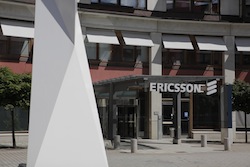Ericsson is aiming to boost indoor coverage with the help of new technology using a mix of licenced and unlicenced spectrum as well as small cells.
Licenced Assisted Access (LAA) will be introduced to the vendor’s small cell portfolio from September 2015. T-Mobile US is planning to test the product during the next 12 months.
The technology enables carrier aggregation of licenced and unlicenced spectrum to improve indoor data traffic. It uses a four percent chunk of the 5GHz band, with Ericsson claiming it could boost data speeds by up to 150MBps.
The vendor added LAA operates on a “fair sharing” basis, meaning both Wi-Fi users and anyone using this technology will have equal access to the technology.
Ericsson said the technology was in response to in-house research, which revealed only 41 percent of consumers are highly satisfied with using their smartphone indoors on data networks.
Thomas Norén, Vice President, Head of Radio Product Management, Ericsson, commented: “Consumers, businesses and industries are all transforming through mobility, placing ever greater demands on finite spectrum resources. So, we are very focused on innovations that improve app coverage while making ultra-efficient use of spectrum.
“One of the great things about LAA is its ‘rising tide’ effect, increasing system capacity and making way for better service to all users in the area, whether they have an LAA-enabled device, or are using Wi-Fi or cellular access.”
Among the first Ericsson products that will feature the new technology are the Radio Dot System for medium and large buildings and its RBS6402 Indoor Picocell for buildings under 50,000 square feet.
Peter Jarich, Vice President of Consumer and Infrastructure services, Current Analysis, said: “In our discussions of future 5G networks, a number of themes are front and centre: network function virtualisation, small cell architectures, use of higher frequency bands, and licensed-unlicensed band aggregation. The License Assisted Access that Ericsson is integrating into its small cell portfolio clearly foreshadows this 5G future.
“Ultimately, it’s all about optimising the network to support diverse consumer applications, diverse user locations (indoors and outdoors), and diverse device types – including future IoT (Internet of Things) demands.”
Read more:
Nokia, STC conduct TDD-FDD CA trial using new spectrum combinations
Ericsson, Orange achieve 300MBps in trial of 3.5GHz FDD LTE-A



